| |
 |
| |
|
On entering the Hall you
will notice large stained glass windows. These date from the early 1900's
and have a distinctly Australian feel about them, with large eucalyptus like
trees in the scene. The Australiana theme is carried through to other parts
of the home. The plaster ceiling moulds in the small ante-room and large
entrance hall are of gumnuts and gum leaves and on the second story
entrance hall ceiling the moulds depict Waratahs.
There is a little wrought
iron light in the ante-room which is one of only three original light
fittings remaining in the home. The wood panelling in the entrance hall and
up the stairs is thought to be of red pine and the handrails are of
mahogany. The floors are believed to be Kauri pine.
next
back to top |
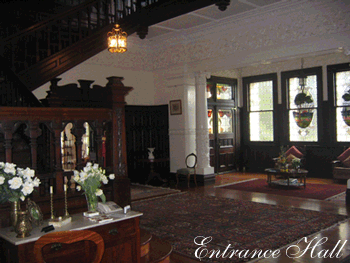 |
 |
 |
|
|
| |
 |
| |
|
Veer left past the
ornate fireplace, with the Pearson family motto, "Rather Dye Than
Disloyal" over the fire box (The family crest was pilfered from
here years ago as was a similar one in the dining room).
The billiard room is
adorned with large "Victoria style" sash windows. This style of
window is carried throughout the house both upstairs and down and
allows the house an enormous amount of light, not normally the case in
a home of this era. This was the billiard room in Pearson's day, but
the table is not the original table. This was purchased at auction in
1998 in rather poor condition and was then restored and brought to
Kilmany Park. The table is an English oak table and dates from the
early 1900's.
next
back to topp
|
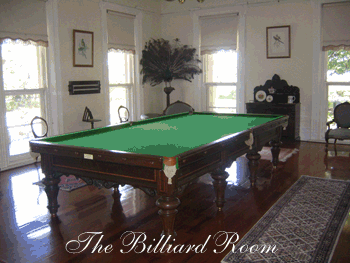 |
 |
 |
|
|
| |
 |
| |
|
Leave
the billiard room and turn left down a long corridor. Directly in front you
will see the remnants of a lead light window. Behind this is a small
room that is referred to as "the flower room". This apparently was used
by the Pearson ladies or their staff to "do the flowers". It is not
renovated at this stage, but is on a priority list of things to
restore.
You will also notice a false ceiling extending the full length
of the corridor. This was installed by the Church to allow access for
services from one end of the house to the other. There are ornate
plaster ceilings above this, and the plan is to remove the false ceiling
and resite the services, probably under the floor.
next
back to top
|
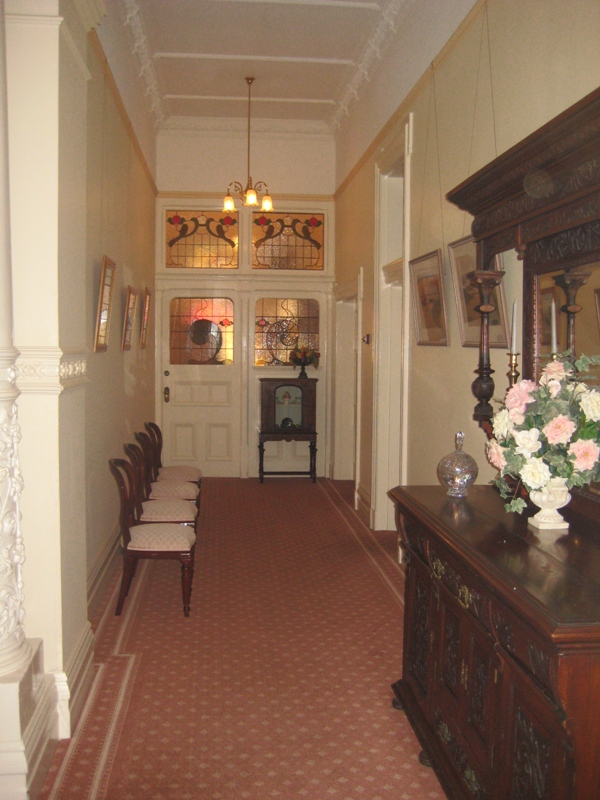 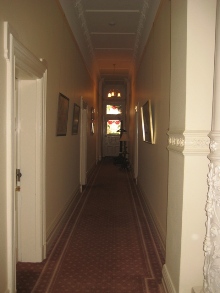 |
|
|
| |
 |
| |
|
Turn
right from the corridor and you are in the magnificent dining room.
Grape vine and grape leaves are the mouldings for the plaster ceilings
in this room. Out of the window with its "Federation" fret work screen,
you can see the "Federation Oak" planted in May 1901 by King George V
when he was the Duke of York.Turn
right from the corridor and you are in the magnificent dining room.
Grape vine and grape leaves are the mouldings for the plaster ceilings
in this room. Out of the window with its "Federation" fret work screen,
you can see the "Federation Oak" planted in May 1901 by King George V
when he was the Duke of York.
next
back to top
|
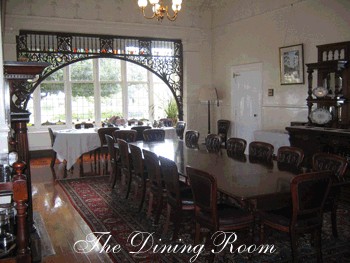 |
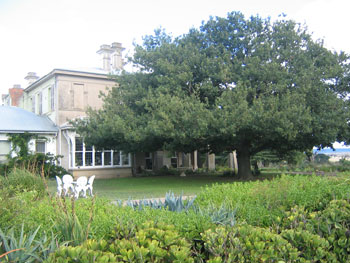 |
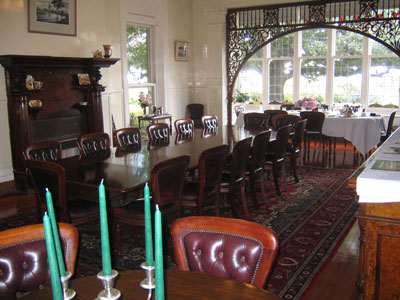 |
|
| |
 |
| |
|
As
you walk out of the dining room and back down the corridor to the
"first room" on the left, you will see a renovated bedroom suite with
ensuite bathroom. This was virtually unliveable in 1995 with terrible
rising damp. This extended along all the rooms on the north side of
the house and was successfully treated in 1998.
next
back to top
|
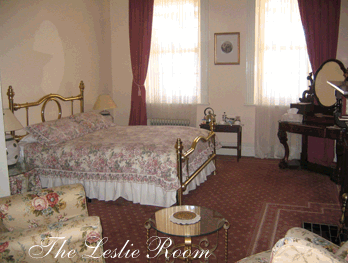 |
|
| |
|
| |
|
Walk back through the
Entrance Hall and across into the Drawing Room you will find the plaster ceilings
here are very ornate and depict poppy flowers and seed heads. This room
speaks for itself. Two of the original three light fittings can be seen
attached to the ornate fret work at the end of the room.
next
back to top
|
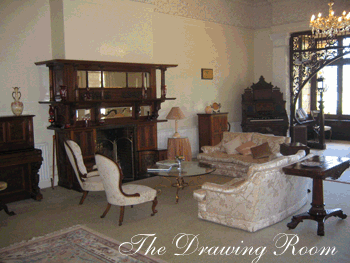 |
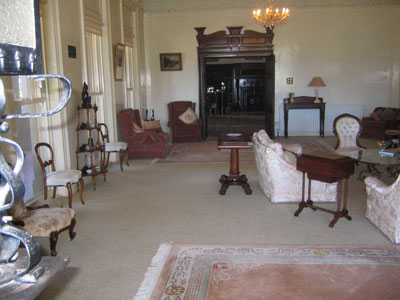 |
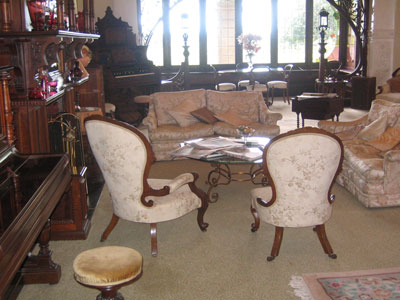 |
|
| |
|
| |
 |
| |
|
Up the staircase
and on to the landing you can see southwards towards the Latrobe
River, across part of the property surrounding the mansion. The rooms
available upstairs have been fully renovated.
The ceilings
upstairs are all pressed metal and the patterns in each room are
different. The renovated areas are now monochromatically painted. This
was certainly not the case in 1995 with rooms being green, blue, pink,
yellow and having carpets of every conceivable colour and style. The
conditions of these rooms were very poor. In Pearson's day, these rooms
were all wallpapered. Small remnants of some of these have been found
indicating it must have been indeed an extraordinarily, ornate home. |
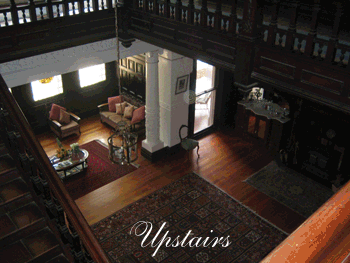 |
|
| |
back to top |
Kilmany Park Bed & Breakfast - Gippsland. Victoria. Australia. Ph: +61
3 51 44 2345 Fax: +61 3 51 44 3937
www.kilmanypark.com.au or
www.kilmanypark.com
|

